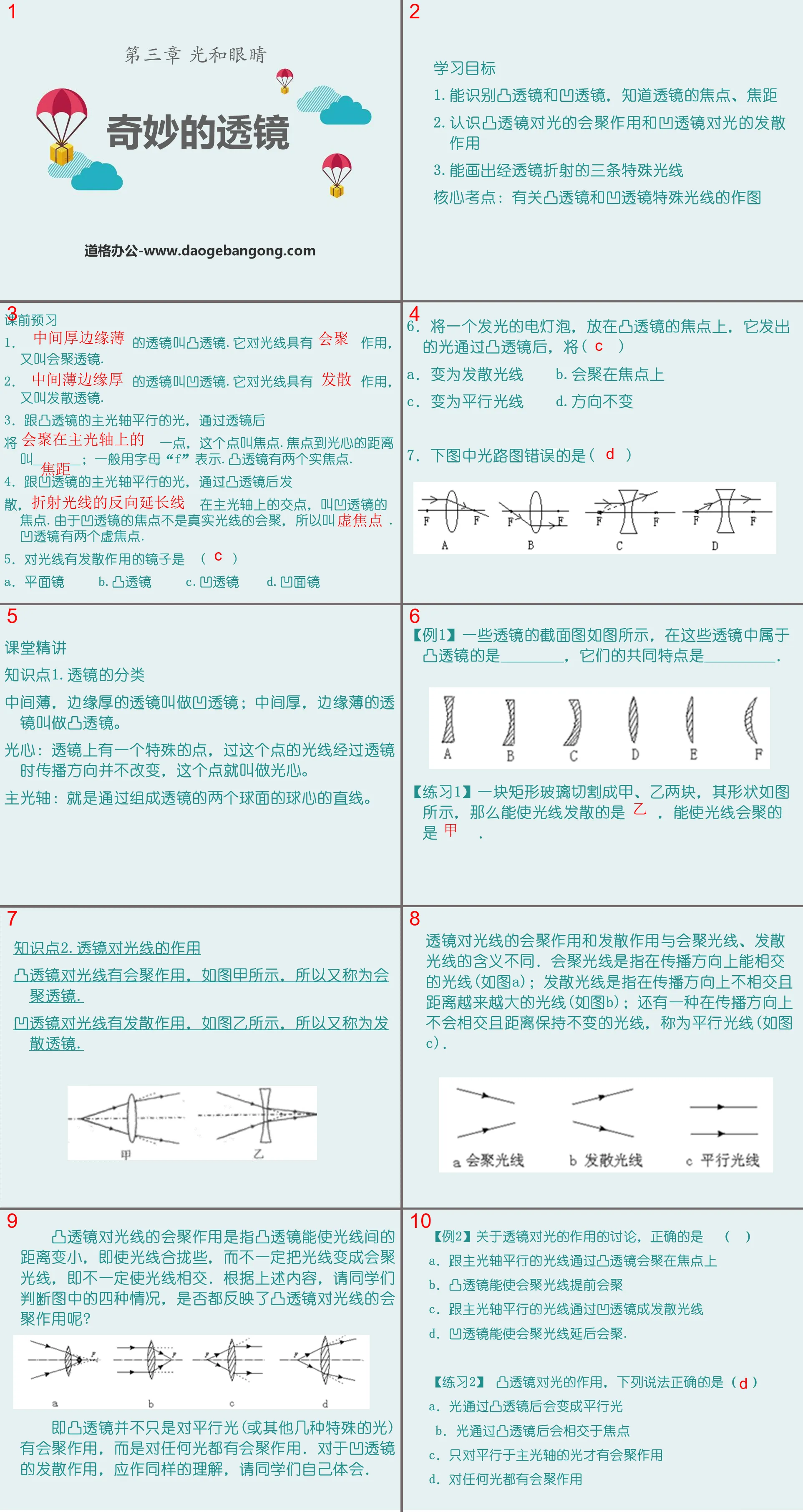People's Education Edition Physics for Grade 8, Volume 2
People's Education Edition Physics for Grade 8, Volume 1
People's Education Edition Ninth Grade Physics Complete Book
Shanghai Science Edition Ninth Grade Physics
Shanghai Science Edition 8th Grade Physics
Beijing Normal University eighth grade physics volume one
Lu Jiao Edition Ninth Grade Physics Volume 2
Beijing Normal University Ninth Grade Physics Volume 1
Lu Ke Edition High School Physics Compulsory Course One
Lu Jiao Edition Ninth Grade Physics Volume 1
Guangdong and Shanghai Edition Ninth Grade Physics Volume 1
People's Education Press High School Physics Compulsory Course II
Beijing Normal University Ninth Grade Physics Volume 2
Lu Jiao Edition Eighth Grade Physics Volume 2
Lu Jiao edition eighth grade physics volume 1
Guangdong and Shanghai Edition Ninth Grade Physics Volume 2

| Category | Format | Size |
|---|---|---|
| Guangdong and Shanghai version of eighth grade physics volume one | pptx | 6 MB |
Description
"Wonderful Lens" Light and Eyes PPT Courseware
learning target
1. Be able to identify convex lenses and concave lenses, and know the focus and focal length of the lens
2. Understand the converging effect of convex lenses on light and the divergent effect of concave lenses on light
3. Be able to draw three special rays of light refracted by the lens
Core test point: Drawing of special light rays for convex lenses and concave lenses
Preview before class
1. The lens of ____________ is called a convex lens. It has a _____ effect on light and is also called a converging lens.
2. A ____________ lens is called a concave lens. It has a _____ effect on light and is also called a divergent lens.
3. Light parallel to the main optical axis of a convex lens passes through the lens
Put __________ a little bit, this point is called the focus. The distance from the focus to the optical center is called _______; usually represented by the letter "f". A convex lens has two real focus points.
4. Light parallel to the main optical axis of the concave lens is emitted after passing through the convex lens
The intersection point of __________ on the principal optical axis is called the focus of a concave lens. Since the focus of a concave lens is not the convergence of real rays, it is called _____. A concave lens has two virtual focuses.
5. A mirror that diffuses light is ( )
A. Plane mirror B. Convex lens C. Concave lens D. Concave mirror
Lectures in class
Knowledge point 1. Classification of lenses
A lens that is thin in the middle and thick at the edges is called a concave lens; a lens that is thick in the center and thin at the edges is called a convex lens.
Optical center: There is a special point on the lens. The propagation direction of the light passing through this point does not change when passing through the lens. This point is called the optical center.
The principal optical axis is the straight line passing through the centers of the two spheres that make up the lens.
[Example 1] The cross-sectional view of some lenses is as shown in the figure. Among these lenses, the convex lens is ________, and their common feature is _________.
[Exercise 1] A rectangular piece of glass is cut into two pieces A and B. The shape is as shown in the figure. Then the thing that can make the light diverge is _____, and the thing that can make the light converge is _____.
Knowledge point 2. The effect of lens on light
Convex lenses have a converging effect on light, as shown in Figure A, so they are also called converging lenses.
Concave lenses have a divergent effect on light, as shown in Figure B, so they are also called divergent lenses.
The converging and diverging effects of a lens on light have different meanings from converging and diverging light. Converging rays refer to rays that can intersect in the direction of propagation (as shown in Figure a); divergent rays refer to rays that do not intersect in the direction of propagation and are increasingly distant (as shown in Figure b); and another type of ray that does not intersect in the direction of propagation (Figure b) Light rays that will intersect and maintain the same distance are called parallel rays (Figure c).
The converging effect of convex lenses on light means that the convex lens can make the distance between light rays smaller, even if the light rays are closer together, it does not necessarily turn the light rays into convergent rays, that is, it does not necessarily make the rays intersect. Based on the above content, ask students to judge whether the four situations in the picture all reflect the converging effect of convex lenses on light?
That is to say, the convex lens not only has a convergence effect on parallel light (or several other special lights), but also has a convergence effect on any light. The divergence effect of concave lenses should be understood in the same way, and students are invited to experience it themselves.
[Example 2] Regarding the discussion of the effect of lenses on light, the correct answer is ( )
A. Light rays parallel to the principal optical axis converge at the focus through a convex lens
B. Convex lenses can make concentrated light converge in advance
C. Light rays parallel to the main optical axis pass through the concave lens and become divergent rays
D. Concave lenses can delay the convergence of concentrated light.
[Exercise 2] Regarding the effect of convex lenses on light, which of the following statements is correct ( )
A. Light turns into parallel light after passing through a convex lens
B. Light passing through a convex lens will intersect at the focus
C. It only has a converging effect on light parallel to the main optical axis
D. Has a converging effect on any light
Knowledge point 3. Focus and focal length of the lens
After being refracted by the convex lens, the light rays parallel to the main optical axis will converge at a point on the other side. This point is on the main optical axis. We call it the focus, represented by F. Each convex lens has two focus points, respectively located at On both sides of the optical center. According to the principle that the light path of light is reversible during refraction, we can conclude that the light emitted from the focus of the convex lens will become a set of light rays parallel to the main optical axis after passing through the convex lens. The focus of a convex lens is the point where the actual light rays converge, so it is also called the real focus.
The light rays parallel to the main optical axis become divergent after passing through the concave lens. Extend these refracted rays in the reverse direction and find that they will intersect at a point on the main optical axis. This point is the focus F of the concave lens. Since the focus of the concave lens is not the actual convergence of light rays, point, so it is also called virtual focus.
Focal length: The distance from the optical center to the focus is called the focal length. It is represented by the letter f.
Keywords: Light and Eyes Teaching Courseware, Wonderful Lens Teaching Courseware, Guangdong and Shanghai Version 8th Grade Physics Volume 1 PPT Courseware Download, 8th Grade Physics Slide Courseware Download, Light and Eyes PPT Courseware Download, Wonderful Lens PPT Courseware Download, .PPT Format;
For more information about the "Light and Eyes Wonderful Lenses" PPT courseware, please click the Light and Eyes ppt Wonderful Lenses ppt tag.
"Click New Materials" Materials Around Us PPT Courseware 3:
"Click New Materials" Materials Around Us PPT Courseware 3 1. Nanomaterial Nano is a unit of length 1nm=10-9m Nanomaterial scale: 1 to 100 nanometers 1. Characteristics When the particles of the material are as small as nanometers, the material's Performance will change significantly. ..
"Click New Materials" Materials Around Us PPT Courseware 2:
"Click New Materials" Materials Around Us PPT Courseware 2 Teaching Objectives 1. Preliminarily understand some characteristics and applications of nanomaterials, semiconductor materials, superconducting materials, and invisible materials. 2. Experience the process of collecting information such as surfing the Internet, going to the library, conducting social surveys, etc.
"Click New Materials" Materials around us PPT courseware:
"Click New Materials" Materials Around Us PPT Courseware Learning Objectives 1. Understand some characteristics, applications and development prospects of nanomaterials, semiconductor materials, superconducting materials, invisible materials, etc. 2. Understand the impact of new materials on human life and social development The impact of core examination...
File Info
Update Time: 2024-11-18
This template belongs to Physics courseware Guangdong and Shanghai version of eighth grade physics volume one industry PPT template
"Wonderful Lens" Light and Eyes PPT Courseware Simple campus recruitment activity planning plan summary enterprise and institution recruitment publicity lecture PPT template is a general PPT template for business post competition provided by the manuscript PPT, simple campus recruitment activity planning plan summary enterprise and institution recruitment promotion Lecture PPT template, you can edit and modify the text and pictures in the source file by downloading the source file. If you want more exquisite business PPT templates, you can come to grid resource. Doug resource PPT, massive PPT template slide material download, we only make high-quality PPT templates!
Tips: If you open the template and feel that it is not suitable for all your needs, you can search for related content "Wonderful Lens" Light and Eyes PPT Courseware is enough.
How to use the Windows system template
Directly decompress the file and use it with office or wps
How to use the Mac system template
Directly decompress the file and use it Office or wps can be used
Related reading
For more detailed PPT-related tutorials and font tutorials, you can view: Click to see
How to create a high-quality technological sense PPT? 4 ways to share the bottom of the box
Notice
Do not download in WeChat, Zhihu, QQ, built-in browsers, please use mobile browsers to download! If you are a mobile phone user, please download it on your computer!
1. The manuscript PPT is only for study and reference, please delete it 24 hours after downloading.
2. If the resource involves your legitimate rights and interests, delete it immediately.
3. Contact information: service@daogebangong.com
"Wonderful Lens" Light and Eyes PPT Courseware, due to usage restrictions, it is only for personal study and reference use. For commercial use, please go to the relevant official website for authorization.
(Personal non-commercial use refers to the use of this font to complete the display of personal works, including but not limited to the design of personal papers, resumes, etc.)
Preview










